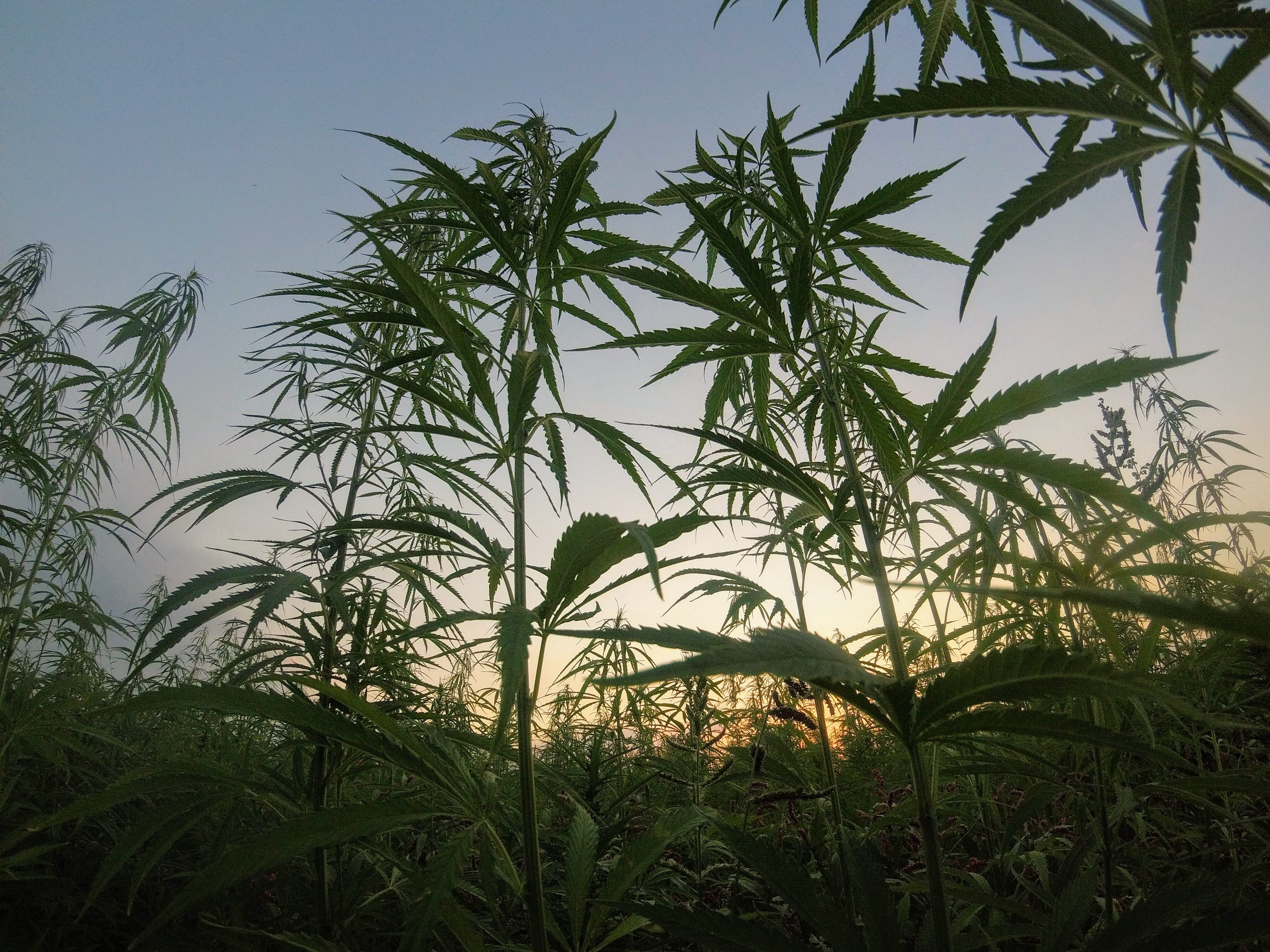The obstacles to nationwide legalization of recreational marijuana are falling like dominoes. That worries a lot of people—especially many in the national and state legislatures—who fear Reefer Madness-like mobs of cannabis-infused urban zombies on the streets and the roads.
Others—perhaps influenced by the money to be saved on enforcement and the revenues to be garnered from sales and income taxes—welcome the change. Legalization means regulation, a greater likelihood that the cannabis won’t be contaminated, and proper and widespread research into its real dangers and benefits.
Those benefits may include the treatment and management of pain and disease.
The Food and Drug Administration already has approved Epidiolex, an oral solution based on a derivative from marijuana, for the treatment of two rare forms of childhood epilepsy. Now there is increasing evidence (anecdotal and clinical) that marijuana may help replace opioids for chronic pain relief and even wean addicts off of opioids.
At least two rehab centers in California permit cannabis (though not always in a smokable form) for treatment of opioid use disorder (OUD). New York and Pennsylvania have approved medical marijuana for OUD—soon Ohio may follow suit—and New Jersey now allows it for the treatment of chronic pain associated with OUD.
Those dangers may include impaired driving.
Driving While Stoned
In its October 2018 status report on legal pot use and automobile crashes, the Insurance Institute for Highway Safety/Highway Loss Data Institute states that “Crashes are up by as much as six percent in Colorado, Nevada, Oregon and Washington, compared with neighboring states that haven’t legalized marijuana for recreational use,” a fact that was much repeated by the media and on websites with a possible bias.
It’s not clear from where the six percent claim even comes. According to a graph within the report, the increase is higher in Colorado and Washington—13 and 10 percent, respectively—but much, much lower in Oregon—just 1 percent. The only reason for such averaging would seem to be to make the effect seem consistent across the board or to disguise the fact that Oregon’s increase is barely statistically significant.
To complicate the report’s conclusion, later in the same issue, in the section “Q&A on Marijuana”, it states, “The best-controlled study did not find THC-positive drivers to be at greater risk of crashing than other drivers, after controlling for alcohol, age, and sex”.

Not only is that confusing, but it seems a tacit admission that the IIHS/HLDI report is not the “best-controlled study”. If an insurance industry organization such as this can’t make up its own mind, and in fact contradicts its own report, it doesn’t seem very conclusive.
The Best-Controlled Studies
Although the Q&A does not specify the other study to which it refers, it probably was the National Highway and Traffic Safety Administration’s July 2017 “Marijuana-Impaired Driving: A Report to Congress”. Though limited to drivers in Virginia Beach, Virginia—a state where recreational marijuana is not legal—the study’s research teams “responded to crashes 24 hours a day, 7 days a week over a 20-month period” and also controlled for such variables as:
- The presence of alcohol and other drugs
- Age
- Gender
- Race/ethnicity
- Location
- Time of day.
The study found that “There was no difference in crash risk for marijuana-positive drivers who were also positive for alcohol than for marijuana-positive drivers with no alcohol, beyond the risk attributable to alcohol”. In other words, marijuana didn’t make the risk of crash any greater than alcohol alone.
Despite “the potential of marijuana to impair driving-related skills”, the NHTSA’s research “does not show a relationship between THC levels and impairment”. In fact, “after smoking marijuana, subjects in most of the simulator and instrumented vehicle studies on marijuana and driving typically drive slower, follow other cars at greater distances, and take fewer risks than when sober”.
Typical driving impairments noted included:
- Increased variability in lane position—i.e. drifting to the left and right instead of remaining in the center of the lane—but not lane departures
- Driving slower than the speed limit
- Increased following distance between the car ahead instead of tailgating.
A 2009 study from The American Journal on Addictions found that, although inconsistent, case-control studies suggest that “low concentrations of THC do not increase the rate of accidents, and may even decrease them”.
A more recent study, released at about the same time as the IIHS/HDLIU report, “Driving While Stoned: Issues and Policy Options”, from De Gruyter’s Journal of Drug Policy Analysis, found that “The maximum risk for cannabis intoxication alone, unmixed with alcohol or other drugs, appears to be more comparable to risks such as talking on a hands-free cell phone (legal in all states) than to driving with a BAC above 0.08”.
No Reliable Test for Stoned Driving
That doesn’t mean the laws reflect those findings. At least a dozen of the United States has zero tolerance DUI laws for marijuana, meaning any trace of THC—which can sometimes remain detectable in the body days or weeks after use, long after its intoxicating effects have passed—means you are guilty of a DUI. One, Michigan, allows recreational marijuana use.
In addition, six states have “per se” THC laws which kick in if as little as 1-5 nanograms of THC is detected (including recreational marijuana states Colorado and Washington), though a study by AAA concluded there is no “scientifically supported” evidence that per se THC laws are valid. The results sometimes clashed with field sobriety tests, both vice and versa.
Drug Recognition Experts—specially trained police officers who are supposed to be able to recognize marijuana intoxication—are equally fallible. Some positive IDs have been disproven by subsequent blood tests showing no trace of THC.
Roadside marijuana tests are under development, including breathalyzers—at least one is being tested in the field—and an iPad/tablet app, but they may never be able to tell when someone is intoxicated as well as BAC for alcohol.
The dangers of DUI of marijuana—while not nonexistent—seem smaller than drunk driving.
Society has learned to live with the dangers of drinking while driving and rejected prohibition after a dry run of almost 14 years. It can learn to deal with the lesser risks of THC intoxication on the road, too.
Sources
- “FDA approves first drug comprised of an active ingredient derived from marijuana to treat rare, severe forms of epilepsy”. US Food & Drug Administration, June 25, 2018. https://www.fda.gov/newsevents/newsroom/pressannouncements/ucm611046.htm
- Wiese, Beth, et al. “Emerging Evidence for Cannabis’ Role in Opioid Use Disorder”, Cannabis and Cannabinoid Research, Sept. 1, 2018. US National Library of Medicine, National Institutes of Health. https://www.ncbi.nlm.nih.gov/pmc/articles/PMC6135562/
- Brodwin, Erin. “A facility giving marijuana to people with addiction has had a major shakeup after it felt ‘like walking into a cloud of smoke’, July 16, 2018. https://www.businessinsider.com/facility-marijuana-for-addiction-shakeup-2018-7
- Ross, Bob, et al. “Should opioid addiction be an indication for the use of medical marijuana?”, Oct. 2, 2018. http://www.adirondackdailyenterprise.com/opinion/guest-commentary/2018/10/should-opioid-addiction-be-an-indication-for-the-use-of-medical-marijuana/
- Rolen, Emily. “Pennsylvania first state to OK medical marijuana to treat patients addicted to opioids”, May 15, 2018. https://www.phillyvoice.com/opioid-use-disorder-patients-approved-medical-marijuana-program/
- Jaffe, Adi. “Marijuana Replacing Opioid Use? Ohio Is Thinking About It”, Dec. 31, 2018. https://www.psychologytoday.com/ca/blog/all-about-addiction/201812/marijuana-replacing-opioid-use-ohio-is-thinking-about-it
- “Ohio Likely to Consider Medical Pot for Opioid Addiction”, Nov. 4, 2018. https://www.usnews.com/news/best-states/ohio/articles/2018-11-04/ohio-likely-to-consider-medical-pot-for-opioid-addiction
- Livio, Susan. “Do you qualify for medical marijuana in N.J.? Here’s the new list of illnesses”, March 28, 2018. https://www.nj.com/marijuana/2018/03/might_you_qualify_for_medical_marijuana_in_nj_here.html
- “Crashes are up in states with retail sales”, Status Report: Legal pot, Oct. 18, 2018. Insurance Institute for Highway Safety Highway Loss Data Institute. https://www.iihs.org/externaldata/srdata/docs/sr5306.pdf
- Just Facts: The Illinois Sheriffs’ Association, 2017. https://justfactsedu.com/.
- Compton, R. “Marijuana-Impaired Driving: A Report to Congress”, July 2017. National Highway Traffic Safety Administration. https://www.nhtsa.gov/sites/nhtsa.dot.gov/files/documents/812440-marijuana-impaired-driving-report-to-congress.pdf
- Sewell, R. Andrew et al. “The Effect of Cannabis Compared with Alcohol on Driving”, The American Journal on Addictions, Feb. 18, 2010. https://www.ncbi.nlm.nih.gov/pmc/articles/PMC2722956/
- Kleiman, Mark A.R. “Driving While Stoned: Issues and Policy Options”, Journal of Drug Policy Analysis, October 2018. https://www.researchgate.net/publication/328532958_Driving_While_Stoned_Issues_and_Policy_Options
- Drugged Driving Laws, Stop Drugged Driving, Institute for Behavior and Health, Inc. https://www.stopdruggeddriving.org/laws/
- Berg, Kara. “Are you too high to drive? That’ll depend on where you get pulled over”, Lansing State Journal, Dec. 13, 2018. https://www.lansingstatejournal.com/story/news/local/2018/12/13/marijuana-weed-high-drive-owi-driving-drugged-drug-legal/2242360002/
- Silverman, Laura. “Legal marijuana creates an industry for new breathalyzers”, Marketplace, Oct. 24, 2017. https://www.marketplace.org/2017/10/24/business/legal-marijuana-creates-industry-new-breathalyzers
- Tanda Gmiter, Tanda. “Skeptics question accuracy of Michigan’s new roadside drug tests” MLive, Nov. 28, 2017. https://www.mlive.com/news/index.ssf/2017/11/skeptics_question_accuracy_of.html
- Yoo, Hae Young. “A test for marijuana impairment? A UMass prof has an app for that”, Boston Globe, Nov. 20, 2016. https://www.bostonglobe.com/business/2016/11/20/test-for-marijuana-impairment-umass-prof-has-app-for-that/hSj8GDMz7eABIksgub5zJN/story.html


Join the conversation!